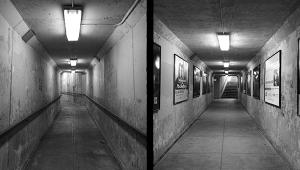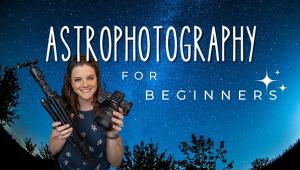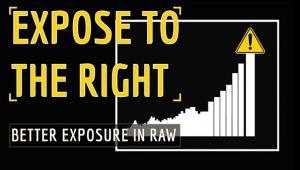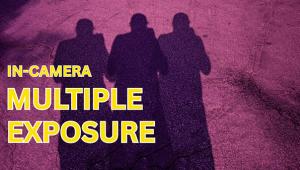Ask a Pro: Scott Kelby Answers Your Photography Questions

Got Questions About Photography? Professional Photographer and Photoshop Expert Scott Kelby Has Got Answers.
Q. Is there a rule of thumb for when a vignette should be added in Lightroom—just for portraits or when a subject is in the center of the photo?
A. The decision to add a vignette, like any special effect, is totally optional, so there’s no rule of when to apply one. It really comes down to whether or not you like the vignette look. If you’re going to apply one, apply it using the “Post Crop Vignetting” in the Lightroom Effects panel rather than using the Vignetting slider under Lens Corrections (the effect looks better and you have more control). As far as which type of photos to apply it to, you can use it on everything from portraits to landscapes—just don’t use too much of it. Also, you can get a similar effect, with much more control, using Lightroom’s Radial Filter. Using that filter is kind of like adding a spotlight right where you want it, so your subject doesn’t have to be in the center of the photo at all. One last thing: I use the Vignette effect a lot but most folks don’t realize I even do it, because I use a very subtle amount just to take the “edge” off the edges. I use a setting of -11. Works like a charm.
Q. I am fed up with my PC, as every year it’s something—hard drive crashes, viruses, etc. I would like to switch to Mac, but how painful is it? My Photoshop CS4 is for Windows only, which I will lose, but my Lightroom 5 is for Windows and Mac.
A. Since you’re using both Photoshop and Lightroom (but versions Adobe doesn’t make or support anymore), get on Adobe’s $9.99 a month “Photographer’s Bundle” deal, so you’ll then have the very latest versions of both, and you’ll get any new feature updates automatically without paying anything extra. I don’t want to plug my own thing, but if you’re a KelbyOne.com member, first-time Creative Cloud subscribers can get the deal for only $7.99 a month. Just sayin’. Anyway, Lightroom will update your old Lightroom 5 catalog, so you’ll be up and running with all the latest stuff. By the way, you can plug your hard drive into your Mac and have your new Mac version of Lightroom access the images on your external hard drive. I have a tutorial on how to do this on my site, lightroomkillertips.com. Hope that helps.
Q. I’m having some difficulty with my bird photography. I have two camera bodies, a Canon 7D and a 1D X. When I use the 7D, I’m very satisfied with the results. However, using the same lens and technique, I have trouble getting sharp images with the 1D X. I’m more than 100 percent sure the issue is not with the camera, but with something I’m doing. So, what am I doing wrong?
A. I think the problem actually is with your camera body. While it might not need a trip to the repair shop, it might need to be “reset” software-wise, because that 1D X should be crushing that 7D in just about every category, especially when it comes to sharp autofocus. Try this: Press the menu button on the back of your 1D X, then scroll over to the wrench icon. Once there, scroll over to the fourth set of menu items, then scroll down to “Clear All Camera Settings” and hit the “Set” button. That’s going to reset the entire camera back to its factory defaults, so anything you might have changed by accident (or otherwise) will be reset. Now give that 1D X a try. If it still doesn’t work, then it is time to send it in for repair. There’s not a special technique between the 7D and the 1D X—the 1D X should make your job easier, and you should be nailing more shots in autofocus by a long shot. By the way, before you do any of this, be doubly sure your 1D X has “AI Servo” turned on, so it tracks focus. I know it’s a long shot, but if you didn’t have it turned on while operating the 1D X, but did on your 7D, that alone would be your culprit.
Q. I wear trifocals and can’t seem to adjust the camera’s diopter to get a sharp image with my glasses on. If my lens is in a slightly different area than where I adjusted for, I lose the sharpness. I’ve resorted to removing my glasses with the diopter adjusted for uncorrected vision. Is there a way around this? It’s troublesome to keep removing and replacing my eyeglasses.
A. The folks at Hoodman actually made a special set of glass frames, called HPF1 PhotoFrames, especially for photographers. One of the lenses literally flips up so you can keep your glasses on and use your bare eye right on the camera’s eyecup. Although the frames are no longer being made, you can still find them new on Amazon and eBay.
Q. I bought a full-frame, 24-megapixel camera that I was told was really good at keeping the noise low when shooting at high ISOs in low light. However, I recently shot inside a restaurant at just ISO 2000 and when I zoomed in to 100 percent size in Photoshop, I could see quite a lot of noise. Is there something wrong with my camera?
A. I don’t think so. However, there may be something wrong with how you’re evaluating your image noise on screen. Are you going to share the image online at 100 percent size? Probably not. Probably more like four- or five-inches wide at best. Yet you’re evaluating the image at a size that is probably 10 times the size anyone will ever see it at. Even if you printed that image really large, you probably wouldn’t be printing it at its full native size. Give this a try: Open the image on your monitor at a size that fills your screen (on a laptop), or 25 percent size on a larger display. I’ll bet you’ll see little, if any, noise whatsoever even at that full screen size. To me, that’s a much better way to evaluate the noise in your image—not based on how it looks at 100 percent—but based on the final size you’ll be sharing it, either online or in print. Luckily in print much of the noise you see on screen will virtually disappear anyway, so don’t panic if you are printing at a large size.
Scott Kelby is a photographer, Photoshop Guy, award-winning author of more than 50 books, and CEO of KelbyOne, an online education community dedicated to helping photographers take the kinds of images they’ve always dreamed of. You can learn more about Scott at his daily blog (scottkelby.com), or follow him on Twitter: @scottkelby.
(Editor’s Note: Ask a Pro is a Q&A column from professional photographer, writer, and educator Scott Kelby. Scott is here to answer all your photography-related questions, so if you have something you’d like to know, e-mail him at editorial@shutterbug.com -- with “For Scott Kelby” as the subject line -- and your query could be featured in the next edition of Ask a Pro.)

















































